The oikos PhD Seminar is a 2-day event by oikos Warsaw dedicated to “Energy and Environmental Economics”. It provides a platform to present ongoing PhD research, get feedback from...
Case Abstract Ziqitza Health Care Limited (ZHL) is an Emergency Medical Services company founded by five social entrepreneurs in India in 2002, which by 2012 operated 860 ambulances...
Case Abstract This case presents the uncertainty regarding the future of the Dharavi slum redevelopment project in Mumbai, India. Many of the earlier redevelopment plans were unable to...
Case Abstract Brett Beach and Tim McCollum, co-founders of Madécasse, spent two years as Peace Corps volunteers in Madagascar. During that time, they fell in love with the...
Case Abstract Even in 2012, lack of electricity is a major issue in the Indian hinterlands. Many remote villages were not electrified and even those that were, have...
Case Abstract This is a case about the threats to the world’s oceans seen through the lens of the $30 billion per year cruise line industry. There is...
Case Abstract This case describes how Florida Ice & Farm (FIFCO), Costa Rica’s leading beverage company, develops and implements a triple bottom line strategy that addresses not only...
Case Abstract Chipotle Mexican Grill, Inc. (CMG) was a Denver, Colorado-based chain that competed in the fast casual segment of the restaurant industry. The chain offered a range...
Case Abstract This case is about Novo Nordisk, one of the leading global healthcare companies. Novo Nordisk started to focus on sustainability when its predecessor Novo faced criticism...
Case Abstract In June 2012, serial ecopreneur, Chris Morrison, was wondering just how many All Good Bananas he could sell into banana-hungry New Zealand. From trials bringing Fairtrade...
- 1
- 2

